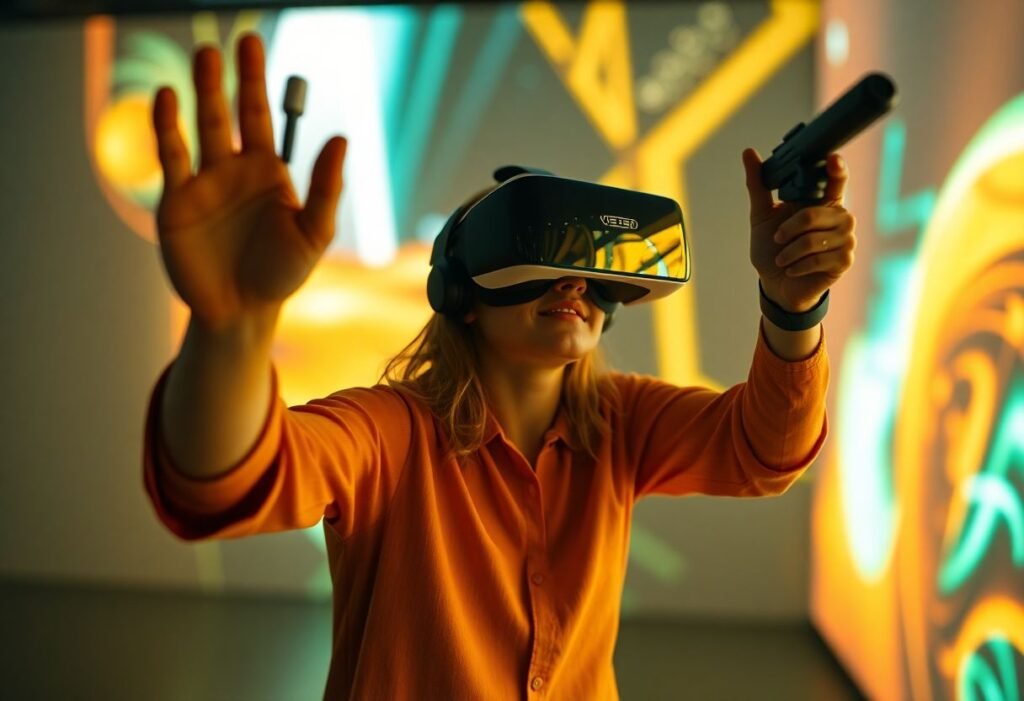The future of virtual reality (VR) in interactive entertainment holds tremendous potential for innovation. As technology advances, VR will increasingly create immersive experiences that redefine how we engage with content. From gaming to social interactions, the applications of VR continue to expand, making it an essential area for research and development.
The Transformation of Gaming through Virtual Reality
Gaming has experienced a groundbreaking transformation with the advent of virtual reality technology. Gamers no longer face flat screens; instead, they immerse themselves in 3D environments that enhance their interaction with the game world. With companies investing heavily in VR capabilities, the challenge lies in creating content that is not only engaging but also utilizes cutting-edge hardware effectively. In addition, VR games promote social connections, allowing users to collaborate and communicate in vibrant virtual spaces.
Revolutionizing Education and Training
Virtual reality provides innovative solutions for education and training. Institutions are incorporating VR to create realistic simulations that enhance learning outcomes. From medical training programs where students practice in lifelike scenarios to engineering courses that offer hands-on experience in a virtual setting, the use of VR can significantly improve proficiency and confidence among learners. Such immersive experiences are vital as they bridge the gap between theory and practical application.
Advancements in Technology Drive VR Innovation
Technological advancements in hardware and software are pivotal in pushing the boundaries of virtual reality. High-resolution displays, improved motion tracking, and haptic feedback devices improve user experiences by making interactions more realistic. Additionally, cloud computing and 5G networks facilitate the delivery of complex VR environments, making them accessible to a wider audience while supporting more intricate user interactions. This trend indicates that the future of VR is bright, fueled by ongoing developments in technology.
Impact on Social Interaction
Social interaction in virtual reality presents new opportunities for connection. Users can create avatars to meet friends, attend virtual concerts, or participate in events worldwide. These experiences mimic real-life interactions but have advantages, including the ability to overcome geographical limitations. Negative consequences could arise, such as addiction or social isolation, which must be managed as VR becomes more integrated into our daily lives. Nevertheless, the promise of enhancing human connection through VR is a vital aspect of its future.
Entertainment Beyond Gaming
Beyond gaming, virtual reality is reshaping various sectors of entertainment, including films and live events. VR experiences in cinemas allow audiences to feel like they are part of the narrative. Meanwhile, concerts and exhibitions are increasingly incorporating VR technology to provide immersive experiences that capture audience interest. As these options grow, the demand for VR content in mainstream media will likely increase, creating new avenues for creative expression.
The Challenges Ahead for VR Adoption
Despite its numerous benefits, several challenges hinder the widespread adoption of virtual reality. The high cost of VR headsets and the need for powerful computing hardware can deter potential users. Furthermore, the risk of motion sickness in some individuals poses another hurdle. Addressing these challenges through research and development, coupled with ongoing user education, will play a critical role in determining how quickly VR becomes integrated into everyday life and entertainment.
Disclaimer: This article is for informational purposes only and does not constitute professional advice.





















